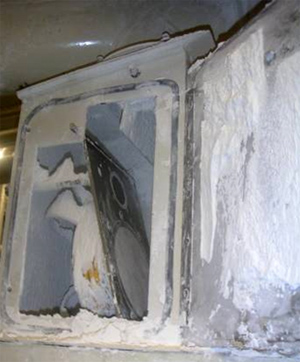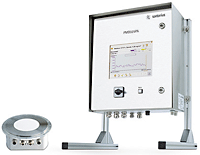TECH FLASH
Real-time moisture analysis key to fruit-gum candy production

Process analytical technology (PAT), originally conceived by FDA for the pharma industry to achieve tighter and more predictable control of processes, can also work well for some food and beverage industry applications. Applied properly, PAT includes tools such as multivariate analysis, design of experiments, risk analysis, statistical process control (SPC) and other process control devices. All of these tools do not have to be employed in the same application. They are used according to the level of control needed. Using PAT is a good way to guarantee quality and minimize waste. PAT makes use of inline, online real-time sensors to pull continuous data from a process, e.g., temperature and moisture.

|
| PMD300 sensor installation monitors moisture of molding starch. Source: Sartorius. |
One process variable, or critical process parameter (CPP), that lends itself well to PAT techniques is the control of moisture—such as in drying milk or maintaining the critical moisture level to produce gelatin-based confectioneries (for example, fruit-gum candies). If certain ingredients are too moist, they can stick together, creating clumps and making storage and transport difficult. If they’re too dry, they can’t be mixed properly to be further processed by other equipment.
In a real-world process application depicted on the Sartorius website, PAT technology controls a gumdrop molding application. In the production of gelatin-based confectionery, which uses the “mogul technique” (molding of soft gummy candies—e.g., gumdrops—typically based on corn starch), the mogul starch must be sufficiently stable for the molding process. The required stability is achieved by carefully adjusting the moisture and temperature of the molding starch, depending on the type of final product. In addition to the moisture and temperature CPPs, the dwell time under defined storage has a critical impact on the product quality in the final step of the manufacturing process.
Corn starch is often used to make gelatin-based gum candies. To prevent waste, the left-over scraps from the molding process are reused in the next molding process. Before they can be reused, they go through a drying process. The drying process uses considerable energy, and the moisture level of the gelatin material has to be held to a consistent and precise level to maintain the correct surface texture of the gum.

|
| Sartorius PMD300 moisture sensor and controls. |
To get the control needed, a European candy manufacturer chose to implement a PAT system based on the Sartorius Mechatronics Model PMD300 series online microwave resonance moisture analyzer, which monitors the starch drying process, ensuring the starch will be at the right moisture level for optimum molding. According to Dan Kopec, Sartorius process analytics manager, the monitoring system checks the product for moisture in real time, continuously transmitting the data to a high-level logic controller. The controller keeps the dryer at the right temperature to maintain the correct moisture level of the product as it passes through the dryer.
The controller can be configured to send alarm signals if the moisture range exceeds setpoint levels. The online moisture analyzer enables non-destructive measurement and provides measuring frequencies of less than a second apart. For recordkeeping, the manufacturer is able to monitor, log and optimize the entire process.
For more information, visit the Sartorius microsite, “PAT in the Food Industry,” or contact Dan Kopec, 480-251-9049.
Looking for a reprint of this article?
From high-res PDFs to custom plaques, order your copy today!








